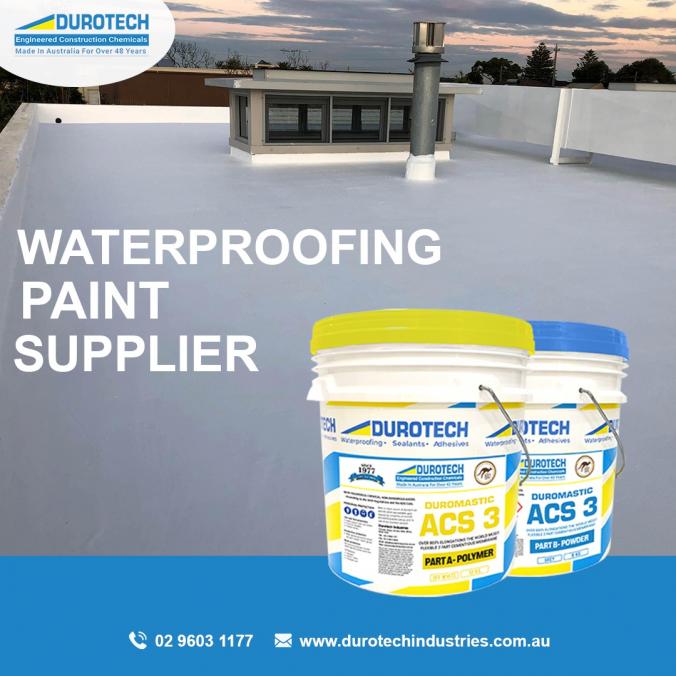aterproofing paint is a type of paint that is designed to create a water-resistant barrier on surfaces, preventing water penetration and potential damage from moisture. It is commonly used to protect surfaces such as walls, floors, roofs, and even certain outdoor structures from water damage. Waterproofing paint is often used in areas prone to high humidity, dampness, or water exposure, such as bathrooms, basements, and exterior walls. When it comes to waterproofing paint and supplies, here are some key points to consider: 1. Types of Waterproofing Paint: Acrylic Waterproofing Paint: This is a water-based paint that forms a flexible waterproof barrier on the surface. It's suitable for both indoor and outdoor applications. Elastomeric Waterproofing Paint: This type of paint is known for its elasticity and ability to stretch and contract with the surface. It's often used on exterior walls, roofs, and surfaces prone to cracking. Concrete Waterproofing Paint: Designed specifically for concrete surfaces, this paint helps seal and protect concrete from moisture and water damage. Masonry Waterproofing Paint: Similar to concrete waterproofing paint, masonry paint is used to protect brick, stone, and other masonry surfaces. 2. Surface Preparation: Proper surface preparation is crucial for the effectiveness of waterproofing paint. Surfaces should be clean, dry, and free from dirt, dust, grease, and loose paint. In some cases, you might need to patch cracks or holes before applying the paint. 3. Application: Follow the manufacturer's instructions for application. Typically, waterproofing paint is applied in at least two coats to ensure proper coverage and a strong barrier against water. Use a high-quality paintbrush or roller for even application. 4. Ventilation: When applying waterproofing paint indoors, ensure proper ventilation to dissipate fumes and aid in the drying process. 5. Curing Time: Waterproofing paint needs sufficient time to cure and form a strong water-resistant barrier. Follow the recommended curing time before exposing the painted surface to water or moisture. 6. Additional Supplies: Depending on the specific type of waterproofing paint you choose, you might need additional supplies such as paintbrushes, rollers, drop cloths, painter's tape, patching materials, and cleaning supplies. 7. Maintenance: Regular maintenance is essential to ensure the longevity of the waterproofing paint. Inspect the painted surface periodically for any signs of damage or wear, and touch up areas as needed. 8. Safety Precautions: Always wear appropriate safety gear, such as gloves and a mask, when working with paint and paint-related supplies. Read and follow the safety instructions provided by the manufacturer. Before purchasing waterproofing paint and supplies, consider the specific requirements of your project, the surface you're working on, and the environmental conditions the painted surface will be exposed to. It's also a good idea to consult with professionals or experts if you're unsure about the best approach for your specific situation. https://www.durotechindustries.com.au/
-
- Categories
- Architecture
- Art
- Cars & Motorcycles
- Design
- DIY & Crafts
- Education
- Film, Music & Books
- Fitness
- Food & Drink
- Gardening
- Geek
- Hair & Beauty
- History
- Holidays & Events
- Home Decor
- Humor
- Kids
- Women's Fashion
- Men's Fashion
- Leisure & Outdoors
- People
- Photography
- Products
- Science & Nature
- Sports
- Technology
- Travel & Places
- Weddings
- Other
- Property
- Animal
- Celebrities
- Health & Fitness
- Illustrations & Posters
- Quotes
- Services
- Renovation
- Home Building
- Business
- Toys
- New
- Popular
- Gifts
- Videos
- Help / Contact Us
- Terms & Privacy
- What is InterestPin


